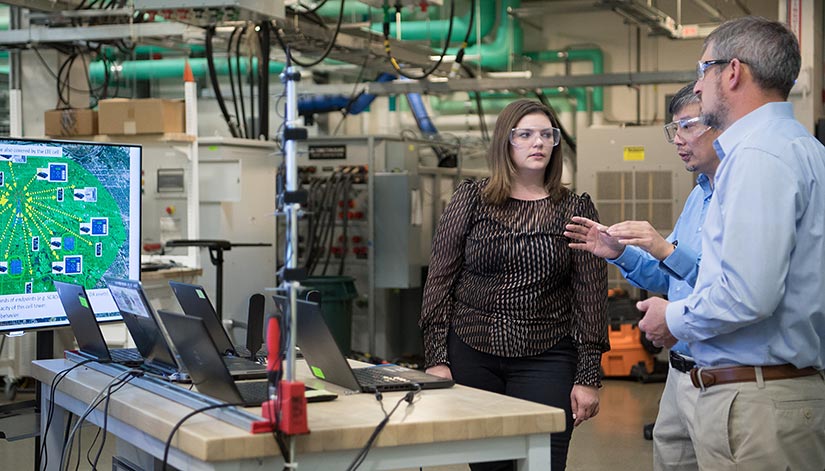Following FCC Ruling, NREL and Industry Partner Anterix See More Opportunities for Grid Modernization
Communication is an important and necessary element to realizing the future modern grid. With power systems that are increasingly distributed—from solar PV, to energy storage devices, to complex customer-level load controls such as home energy management systems—customers are demanding system reliability and resilience like never before. And the communications systems needed to connect such devices must be stable, fast, and effective.

On a congested network, critical communications might not get to the intended recipient fast enough to act. Likewise, wireless communications are one of the few ways to connect to many geographically dispersed grid assets. This is why Anterix, the largest holder of licensed spectrum in the 900-MHz band, joined the National Renewable Energy Laboratory (NREL) in a strategic partnership in 2018 to better understand resilient and secure communications for emerging energy systems—and to protect our nation’s critical infrastructure.
“The partnership between Anterix and NREL has demonstrated the benefits of private LTE networks for advanced grid controls,” said Barry Mather, group manager in NREL’s Power Systems Engineering Center. “With the company’s private LTE network, we have shown that it’s possible to prioritize the most critical network traffic, enabling reliable communications for increasingly complex and distributed energy systems.”
Anterix and NREL joined forces a few years ago to evaluate how private LTE wireless network performance impacted grid-related control and protection use cases by leveraging NREL’s advanced distribution management system (ADMS) test bed in the Energy Systems Integration Facility. The test bed, with real communications networks tied to it, can help utilities better understand real-world communications challenges. For example, these might include poor signal strength or potential traffic congestion caused by thousands of grid-edge devices in use.
In addition to the work already being done between Anterix and NREL, the Federal Communications Commission (FCC) recently made “six megahertz of low-band spectrum available for the development of critical wireless broadband technologies and services.” In other words, utilities can secure and prioritize their communications via broadband wireless in a spectrum that offers wide-area coverage. But it does not stop there. The ruling will give Anterix and NREL even more opportunity to evaluate new use cases and better understand the benefits that this could bring to utilities.
“The recent ruling opens up a plethora of new opportunities for research with Anterix using the ADMS platform,” Mather said. “This added communications will give us better visibility into the system, help utilities de-risk, and allow us to expand upon the work we are already doing in the way of testing ADMS systems.”
According to Mike Brozek, senior vice president of technology for Anterix, “We plan to use the initial results of this important project to help get a greater understanding around how transactive, multidirectional, and mobile energy sources impact our nation’s critical infrastructure. These, along with rapidly evolving technologies, reinforce the need for utilities to understand how new use cases impact both their communications and power infrastructure. Anterix is proud to work with NREL to study these and other use cases to determine how utilities can use 900-MHz broadband spectrum to create robust, reliable, and secure private LTE wireless networks to better serve their customers today and in the future.”
The NREL-Anterix team hopes that results from this project will help other utilities understand how wireless communications can perform on their systems and provide a framework to explore future solutions.
Watch this video to learn more about the NREL-Anterix partnership.
Last Updated May 28, 2025
